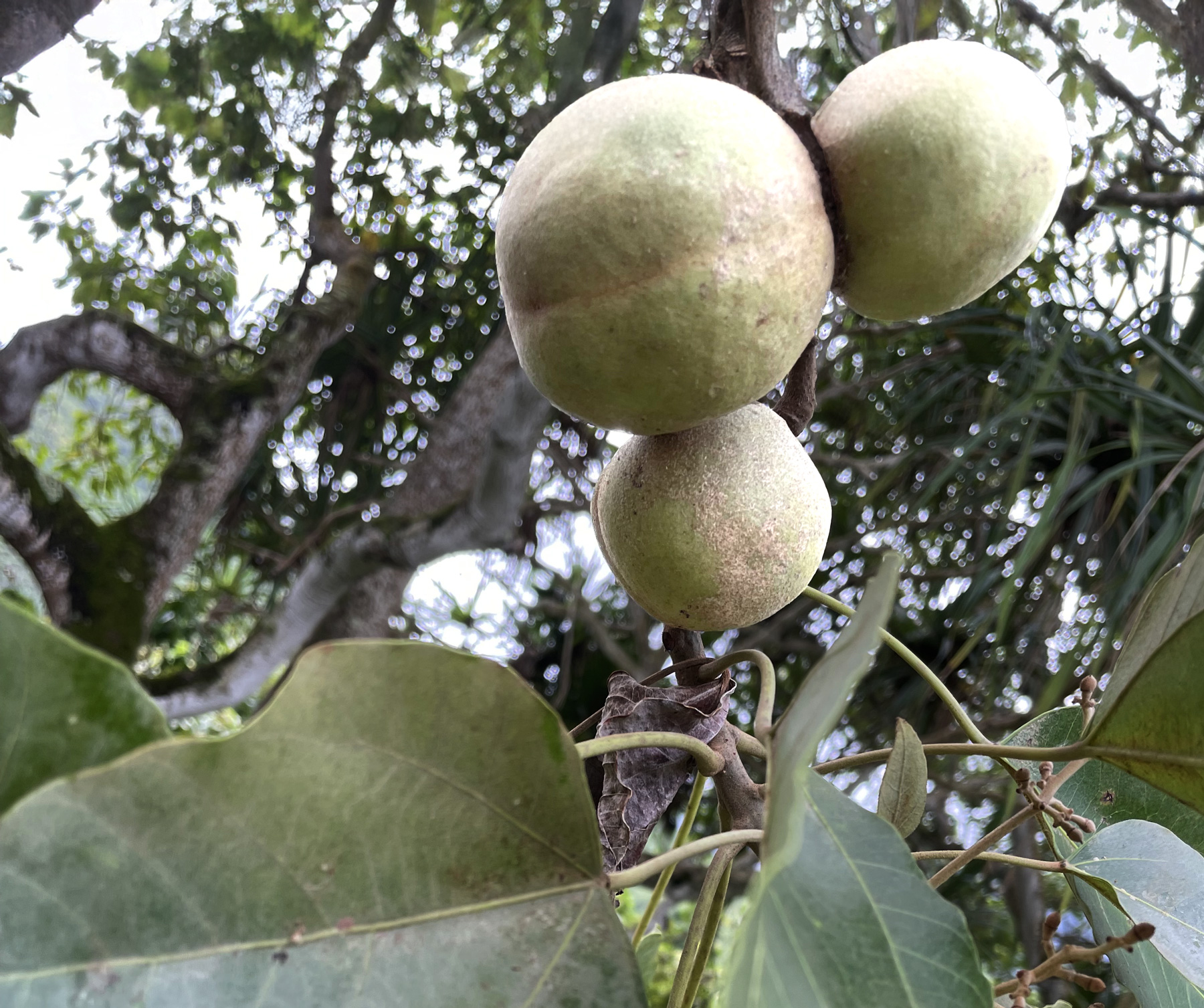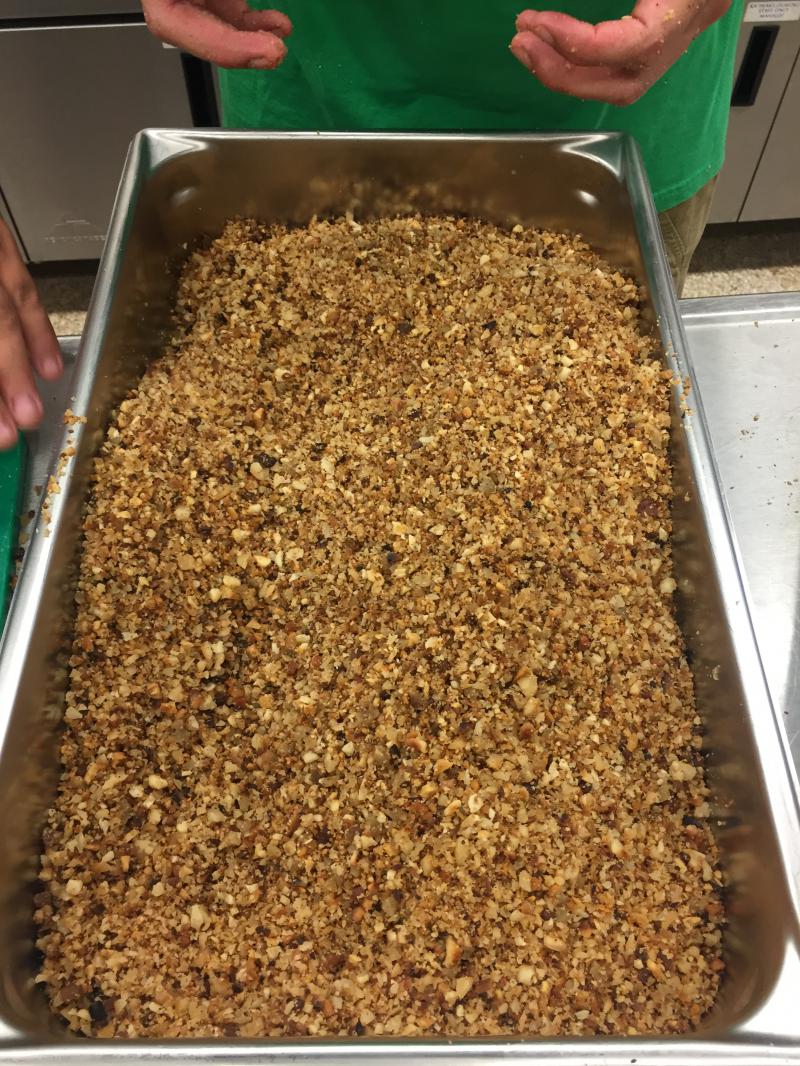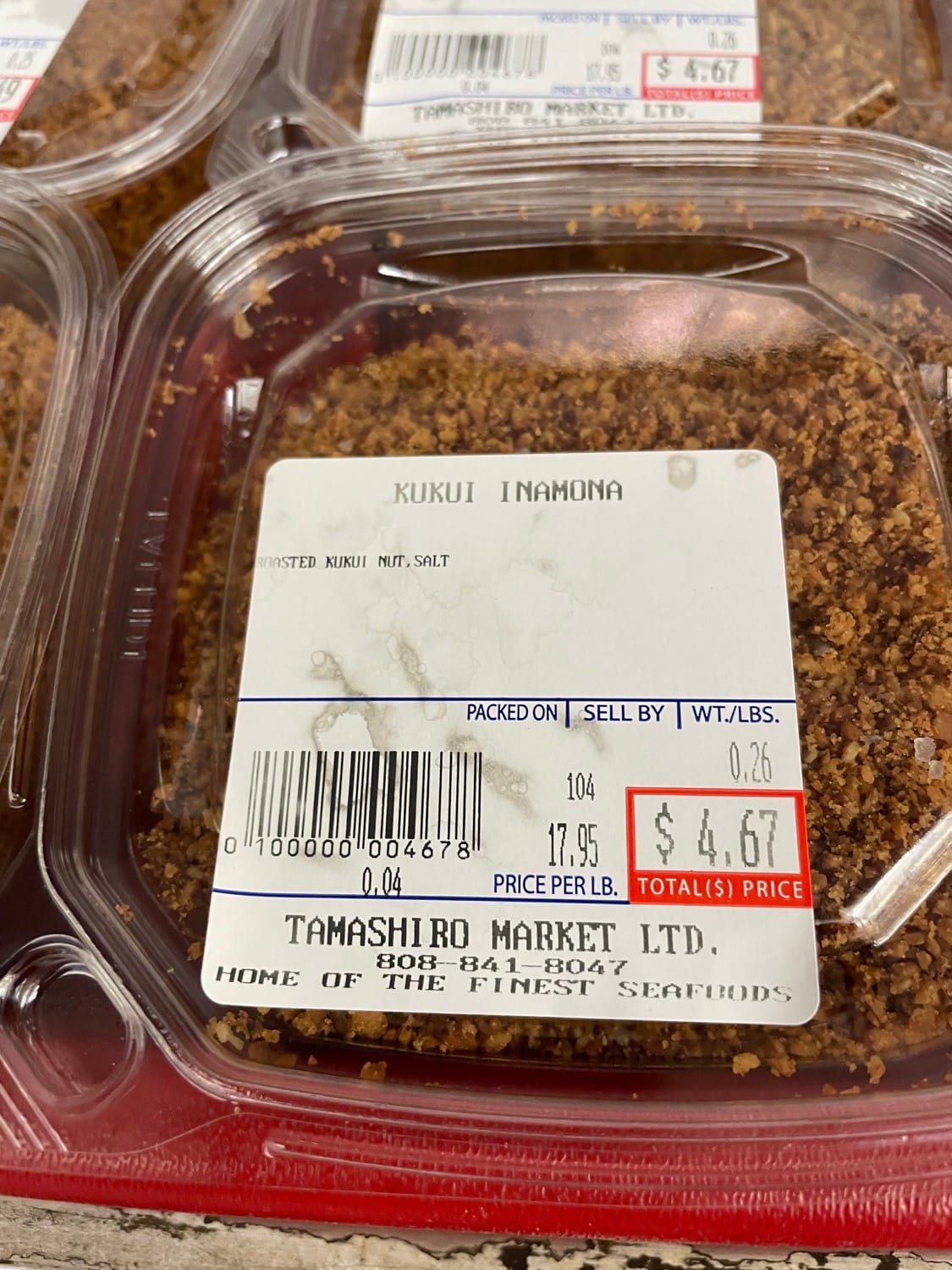Where to Find: Inamona
With poke a household staple, and inamona the essential ingredient for traditional poke, we want to make sure you can find it for your kitchen.

The condiment inamona is born of the fruit of the kukui tree, the official state tree of Hawaiʻi and one of the “canoe plants” intentionally carried by the Polynesians across the sea to cultivate on new islands. Early Hawaiians used the whole tree: kukui bark, wood, roots, leaves, nuts, flowers, and sap. The bark became kapa, the flowers made lei, and medicines and salves were made from other tree parts. The kukui’s oily nuts were used to make strings of light, and ground into an oil for use in torches. Judiciously consumed raw, the nuts are a laxative.
Inamona is made from roasted kukui nuts and paʻakai, Hawaiian salt, and provides a distinctive salty, nutty flavor to foods. In traditional poke, it is sometimes mixed with various kinds of limu, but that’s it. Inamona is also used in some vegetable, pork, and other fish dishes.

To make inamona the traditional way, the kukui fruits are harvested, dried, and husked. The exposed dried nuts are roasted over hot coals until evenly blackish brown. They are then cooled, and sometimes dipped in cold water to crack the secondary husk and expose the kernel. The kernels are then ground with a mortar and stone, and the paʻakai is added to prevent rancidity. The paʻakai used in the production of traditional inamona has a mineral flavor and a reddish-brown color caused by volcanic clay (it’s commonly known as ʻalaea salt). Some modern recipes call for the addition of chilies or chili water. Originally, inamona was stored in an ipu, a gourd, which kept it cool and allowed it to breath. Today, if stored in a dry, cool place, inamona can last for 6 months to a year.

Some people are still making inamona at home with foraged kukui nuts, but the coal roasting is laborious, and the traditional process of making inamona is in danger of being lost. (Learn more about inamona and other Hawaiʻi Ark of Taste endangered foods.) Both at home and in commercial processes, coal roasting has been replaced with oven roasting, and crushing is mechanized. And because the addition of salt as a preservative is no longer necessary, it’s not even added in some commercial preparations, so that “inamona” is really just roasted, crushed kukui nut in a sealed bag. Check with your source—or make it yourself!
Oʻahu Sources of Inamona (Listed in Alphabetical Order)
- Fresh Fish Market, in Oʻahu Market, 145 N. King St., Honolulu. Open daily, 6 AM to 5 PM, 808-538-6179.
- Marukai, 2310 Kam Hwy, Honolulu. Open daily 7 AM to 8 PM, 808-845-5051.
- Tamashiro Market, 802 North King St., Honolulu. Open every day except Christmas and New Year’s Day, 808-841-8047.
- Tamura’s Market has it “sometimes”: Hau’ula, 54-316 Kam Hwy, 808-232-2332, and Wahiawa, 440 Kilani Ave., 808-622-4117. Best to call first.
- Young’s Fish Market, 1286 Kalani St, Ste B101, Honolulu. Open Mon. – Fri., 9:30 AM to 7 PM; Sat. 8 AM to 4 PM, 808-841-4885.
Online Sources
- Leilani’s Attic sells inamona in packages of 4 oz., 8 oz., 1 lb., and 5 lb. Leilani’s Attic.
- Alii Snack Company sells inamona from Paradise Farms Hawaiʻi, a Big Island producer, in 4 oz., and 10 lb. (two 5 lb. bags) sizes. Alii Snack Company.
